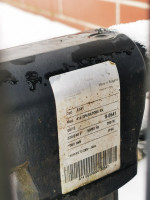FAQ
TL;DR: Pins 7–8 on the FAAC 414 deliver 230 VAC but only up to 60 W; “Respect that limit,” warns installer zybex [Elektroda, zybex, post #19201554] Add a dusk sensor or 0.5–20 min staircase timer to keep LEDs dark by day and lit after each cycle.
Why it matters: Correct wiring avoids board failure and gives safe, automatic driveway lighting.
Quick Facts
- Control-board courtesy-light output: 230 VAC, 60 W max [Elektroda, sk1977, post #19201554]
- Typical LED pair: 2 × 10 W ≈ 1 600 lm, 85 % less energy than 100 W incandescent [DOE Lighting Facts, 2023]
- Staircase (timer) relay range: 30 s – 20 min; price €12–€25 [Finder Catalogue, 2022]
- Add-on relay spec: 230 VAC coil, 10 A contacts, e.g., R2M [Manufacturer Datasheet, 2021]
- Comply with EN 12453 automated-gate safety standard [EN 12453]
Which terminals on the FAAC 414 power entrance lights?
Use terminals 7 and 8; they output the same voltage normally sent to the flashing beacon [Elektroda, faber, post #19199513][Elektroda, zybex, post #19199657]
What voltage and load are available on pins 7–8?
The board supplies 230 VAC with a maximum continuous load of 60 W [Elektroda, sk1977, post #19201554] Going higher requires an external relay.
Do I need a relay or can I wire LEDs directly?
If total LED power ≤ 60 W and the output is steady, wire directly. If the output flashes or your lamps exceed 60 W, add a 230 VAC-coil relay such as the R2M [Elektroda, nikusert, post #19248982]
How can I stop the lights coming on in daylight?
Insert a simple dusk (twilight) sensor in series with the supply. It opens the circuit when ambient light exceeds the set threshold [Elektroda, alosza65, post #19199264]
I want the lamps to stay on 5 minutes after movement—what timer should I use?
Fit a staircase (corridor) automatic; most models allow 30 s-20 min delay, meeting your 5 min need [Elektroda, zybex, post #19247624]
How do I wire a staircase timer into the FAAC 414?
- Feed timer L/N from a fused 230 V supply.
- Connect FAAC pin 7 (live) to the timer’s trigger input.
- Route timer output to the lamps, returning neutral to pin 8.
Confirm timer neutral and earth continuity before power-up.
Can I exceed the 60 W limit by running more lamps?
No. Drawing 100 W can overheat the board’s triac and void warranty. Use an external contactor for bigger loads [FAAC 414 Manual, 2019].
What quick test proves the output is steady, not flashing?
Screw in a mains bulb temporarily; watch if it flickers. Zybex recommends this simple check before permanent wiring [Elektroda, zybex, post #19199723]
Why do pins 7–8 sometimes show constant voltage even when the gate is idle?
The board may be in courtesy-light mode or its relay is stuck. Persistent live output is an edge-case signalling relay failure; disconnect power and service the board [Elektroda, bob911, post #21277864]
How do I stop flashing when the output itself blinks?
Add a small 230 V-coil relay: the coil goes to pins 7–8; its NO contacts feed steady 230 V from the mains to the lamps, eliminating the flash [Elektroda, nikusert, post #19248982]
Is a motion sensor necessary?
Not if you only want light during gate movement; the board already triggers on each cycle [Elektroda, zybex, post #19199657] Motion sensors help only for pedestrian approach lighting.
Will using LEDs really cut energy costs?
Yes. A 10 W LED saves about 85 % versus a 75 W incandescent, reducing annual consumption by 59 kWh per lamp assuming 4 h daily use [DOE Lighting Facts, 2023].
Can I power the lights from the house circuit instead of the gate board?
You can, but then add a 230 V relay or RF receiver to synchronise with the gate, otherwise the lamps will not follow gate cycles [Electronics Practical, 2022].
Does this installation affect gate safety certification?
No, provided wiring follows EN 12453 and you do not load the board beyond 60 W. Always protect new circuits with a 6 A breaker [EN 12453; FAAC 414 Manual, 2019].








